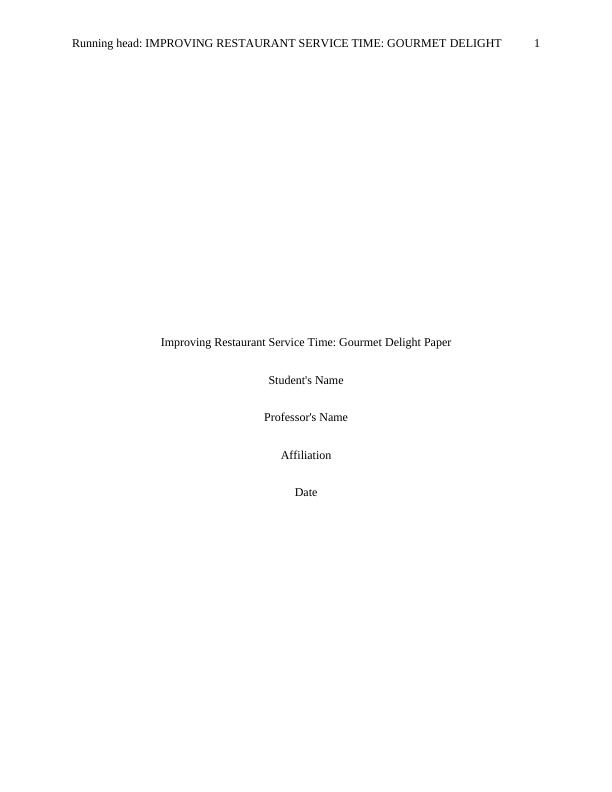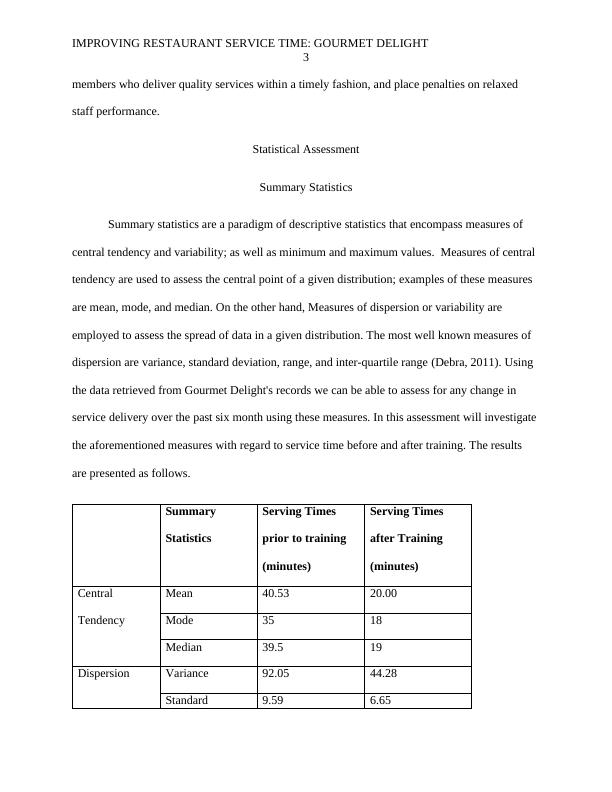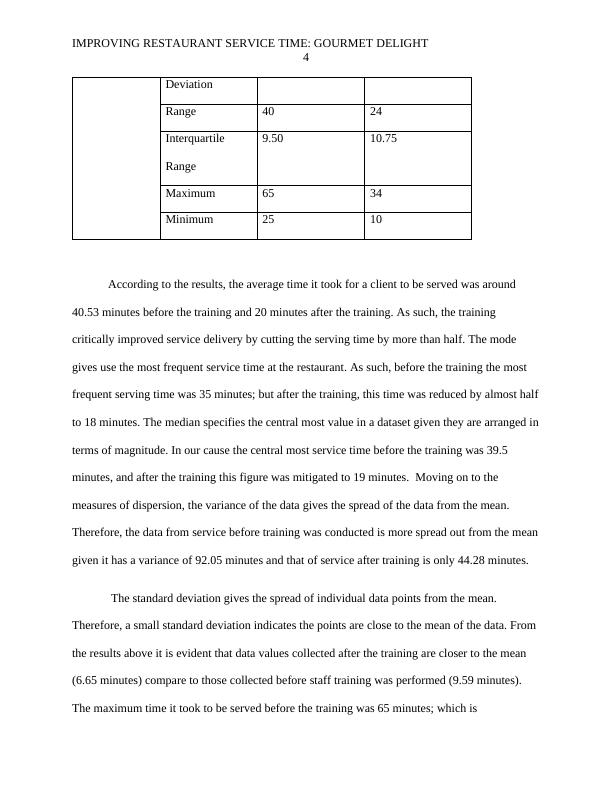Improving Restaurant Service Time: Gourmet Delight Case Study
14 Pages2410 Words85 Views
Added on 2023-06-04
About This Document
This content discusses how Gourmet Delight improved their restaurant service time through staff training and statistical analysis. It includes a summary of the statistical assessment, box-whisker plots, and histogram, as well as recommendations for maintaining the current level of service delivery.
Improving Restaurant Service Time: Gourmet Delight Case Study
Added on 2023-06-04
ShareRelated Documents
End of preview
Want to access all the pages? Upload your documents or become a member.
Serving Time Analysis – Quantitative Research
|12
|2347
|318
Quantitative Methods for Gourmet Delight Restaurant
|10
|2037
|441
Quantitative Methods BAC115
|13
|2382
|178
Serving Time Analysis and Patronage Increase for Gourmet Delight Restaurant
|12
|819
|493
Analysis of Service Times, Advertising Expenditure, Patronage Patterns and Restaurant Takings at Gourmet Delight
|12
|832
|334




